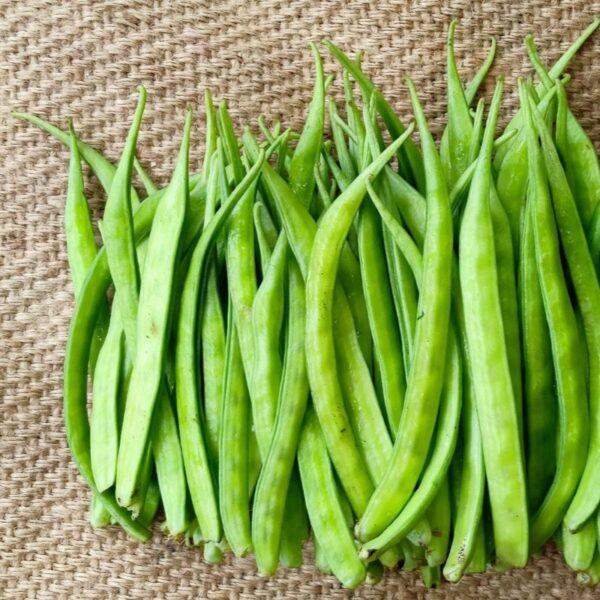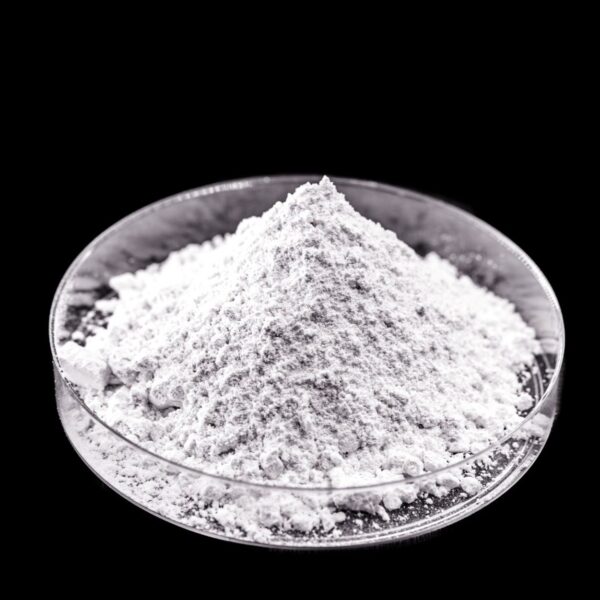Polysorbate 20, or Tween 20, is a widely-used emulsifying agent with many uses in various industries. It is a non-ionic surfactant commonly used in food, personal care, and cosmetic products.
In the food industry, polysorbate 20 is used as an emulsifier to mix oil and water-based ingredients in products such as salad dressings, mayonnaise, and ice cream. It helps create a smooth and consistent texture, preventing oil and water separation. Additionally, it is used as a food additive to improve the shelf life of products, as it can prevent the growth of bacteria and mold.
Polysorbate 20 is also a cosmetics industry surfactant, emulsifier, and solubilizer. This article focuses on food applications.
What is Polysorbate 20?
Polysorbate 20 (C₁₉H₃₇O₅) is an ethoxylated sorbitan monolaurate. As a synthetic non-ionic surfactant and emulsifier, it’s derived from sorbitol, a sugar alcohol. It takes its name from an ethoxylation process which leaves the molecule with 20 repeat units of polyethylene glycol.

As a clear, yellowish liquid that is soluble in water and alcohol, it has various functions, including improving the solubility of oil in water, stabilizing emulsions, preventing precipitation, and acting as a wetting agent. Baked goods, dairy products, ice cream, and processed foods commonly leverage this helpful chemical.
While generally regarded as safe (GRAS), some individuals may be sensitive to polysorbate 20 and experience allergic reactions. Additionally, it is essential to use polysorbate 20 following recommended guidelines to avoid potential toxicity or other adverse effects.
Applications in the Food Industry
Various food products include polysorbate 20, which improves stability, texture, and consistency.
Polysorbate 20 has many benefits and uses and uses in food products, including:
| Function | Applications |
|---|---|
| Wetting Agent | Improves the wetting properties of powders and other dry ingredients. It helps to reduce surface tension and allows the ingredients to dissolve or disperse more easily in water or other liquids. |
| Stabilizer | Helps maintain the stability and consistency of food products. It can prevent separation and maintain uniformity in products such as sauces, dressings, and other emulsions. |
| Solubilizer | Helps dissolve oil-soluble ingredients in water-based products. It can improve flavors, colors, and additives’ solubility and dispersibility. |
| Emulsifier | Helps combine oil and water-based ingredients to create stable emulsions, such as mayonnaise, salad dressings, and ice cream. |
| Dispersant | Evenly distributes insoluble ingredients, such as spices, in food products. It can improve the texture and appearance of products, such as sauces and marinades. |
| Surfactant | Reduces surface tension and helps to stabilize emulsions and foams. It can improve the texture and mouthfeel of products, such as whipped cream and meringue. |
| Viscosity Modifier | Adjusts the thickness or consistency of food products. It thickens or thins sauces, dressings, and other products. |
| Lubricant | Lubricates food processing equipment to prevent sticking and improves the flow of ingredients. |
| Anti-crystallizing Agent | Preserves ice cream’s smooth texture by slowing the crystallization process. |
Product Examples
Polysorbate 20 is found in a wide range of food products, including:
| Type | Examples |
|---|---|
| Bakery | Cakes |
| Confectionery | Sweet fillings, Frosting, Syrups |
| Dairy | Ice Cream, Flavored creams, Yogurt |
| Convenience Foods | Cake mixes, Soups |
| Beverages | Instant beverages, Flavored Drinks |
| Chocolates | Chocolates, Syrups |
| Savory | Margarine, Salad Dressings, Fillings |
Properties of Polysorbate 20
| Molecular Weight | 1226 g/mol |
| Viscosity | 370-430 cps (25 °C, neat) |
| Melting Point | -25 °C |
| Boiling Point | > 100 °C |
| Density | 1.11 g/mL at 20 °C |
| Vapor Pressure | <1.4 hPa (20 °C) |
| Refractive Index | n20/D 1.468(lit.) |
| Flash Point | >230 °F |
| Storage Temperature | <30°C. |
| Solubility in Water | 100 g/L |
| Physical Form | Viscous liquid |
| Specific Gravity | ~1.130 (20/20℃) |
| Color | Amber |
| pH | 6-8 (50g/l, H2O, 20℃) |
| Hydrophilic-Lipophilic Balance (HLB) | 16.7 |
| Claims (*product specific) | Bio-based*, Food Grade*, Halal*, Kosher*, Organic* |
| Appearance | Yellow to Amber Color liquid |
Effects on Food Products
Here’s a breakdown of the effects polysorbate 20 has on food products:
| Homogeneity and Phase Stability | – Excellent solubilizer – Stabilizes products with high concentrations of lipophilic components – Disperses minor hydrophobic components (flavors/oleoresins) |
| Texture and Consistency | – Helps in partial coalescence when used with fat and protein ideal in frozen desserts – Enhances fat destabilization – Adds to the viscosity of beverages – Increases stiffness in frozen desserts |
| Effects on Functional Properties | – Promotes the nucleation of fat and reduces aging time – Improves whipping ability by reducing cell sizes and homogenous distribution of air in whipped cold desserts – Improves dryness and melting resistance in frozen desserts |
| Effects on Sensory Properties | – Creates an enjoyable mouthfeel due to emulsification – Works well with protein-rich/fat-rich beverages – Helps maintain product transparency and clarity – Caution: overuse can lead to unpleasant flavors, especially if stored for a long time |
| Interactions with Other Components | – Cannot be used with potent oxidizing agents – Incompatible with alkalis, heavy metal salts, phenols, and tannic acid – May reduce the activity of many preservatives: Polysorbate 20 is known to deactivate preservatives (parabens) and antimicrobial agents |
Typical Formulations
Cakes
Polysorbate assists in the aeration of cake batters and bread to create a silky-smooth crumb. It is also commonly used in cake or buttercream-type icings for better aeration and prevents water separation. In a study, it also helped reduce the toughness of cake throughout storage time, indicating reduced staling of starch.
Here is an example cake formulation table with polysorbate 20 along with the % weight of ingredients:
| Ingredient | % Composition |
|---|---|
| Water | 29.77 |
| Sugar | 26.00 |
| Flour | 17.38 |
| High Ratio Shortening | 11.22 |
| Glycerol | 3.17 |
| Cocoa | 4.98 |
| Whole Eggs, Dried | 3.78 |
| Baking Powder, Double Acting | 0.76 |
| Salt | 0.73 |
| Starch, Instant Granular | 0.99 |
| Vanilla Flavor, Liquid | 0.09 |
| Bicarbonate of Soda | 0.15 |
| Cinnamon | 0.28 |
| Potassium Sorbate | 0.09 |
| Polysorbate | 0.43 |
| Guar Gum | 0.09 |
| Xanthan Gum | 0.09 |
Ice Cream
In ice cream, polysorbate 20 produces a smoother body and drier texture, reduces meltdown during consumption, improves shape retention, and increases the resistance to shrinkage during storage. It prevents milk proteins from completely coating fat globules, encouraging the destabilization of the fat emulsion. This process creates higher partial coalescence in ice cream. The typical concentration of polysorbate in ice cream ranges from 0.02% to 0.2% of the total mixed weight.
Here is an example ice cream formulation table with polysorbate 20 along with the % weight of ingredients:
| Ingredient | % Composition |
|---|---|
| Milk Fat | 10 |
| MSNF | 11 |
| Sucrose | 10 |
| Corn Syrup Solids | 5 |
| Polysorbate | 0.08 |
| Flavoring substances | As per requirement |
| Water | Make up to 100 |
Polysorbate 20 Formulation Considerations
Stability
Storage of polysorbate 20 in the air at high temperatures promotes peroxide formation. Remove oxygen if you plan to store it over the long term. Here’s a breakdown of some stability attributes and considerations:
| Attribute | Stability |
|---|---|
| Heat | Heat sensitive — darkens when exposed to elevated temperature |
| Light | Light sensitive |
| Oxidative | Prone to oxidation and peroxide formation |
| Cloud | Cloud point >100°C at 2% w/w |
Dosage
The typical usage of polysorbate 20 in food ranges from 0.02 to 1%. Polysorbate 20 has low toxicity (LD50 ~38.9 g/kg).
Sensory Attributes
Polysorbate 20 is a clear, yellow to amber-colored, slightly viscous liquid. It has a greasy odor and a somewhat bitter taste.
Polysorbate 20 Safety & Regulatory Considerations
The American Food and Drug Administration (FDA) has given polysorbate 20 a Generally Recognized as Safe (GRAS) designation, meaning adding it to food is considered safe by experts. GRAS-designated chemicals are exempted from the Federal Food, Drug, and Cosmetic Act (FFDCA) food additive tolerance requirements.
Identification Numbers
| CAS Number | 9005-64-5 |
| EC Number | 500-018-3 |
| E Number (food additive) | 432 |
| INS Number (food additive) | 432 |
| FEMA Number | 2915 |
Fun Facts About Polysorbate 20
- You can derive Polysorbate 20 from sorbitol, sugar alcohol, and lauric acid, a fatty acid in coconut and palm kernel oil.
- In addition to its emulsifying properties, Polysorbate 20 has mild cleansing properties, making it a popular ingredient in personal care and cleaning products.
Polysorbate 20: A Versatile Emulsifying Agent and Surfactant
Polysorbate 20 is a versatile and widely used emulsifying agent with various applications in the food industry. Its ability to mix oil and water-based ingredients, improve solubility, stabilize and preserve products, and enhance texture and consistency has made it an essential component of many formulations. Its uses will continue to expand as formulators and scientists uncover new benefits.






